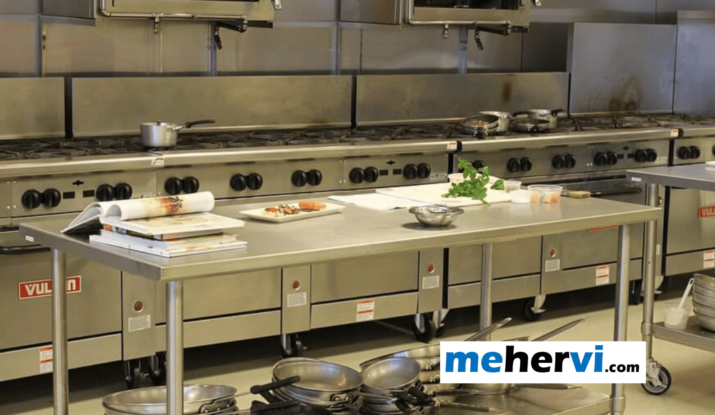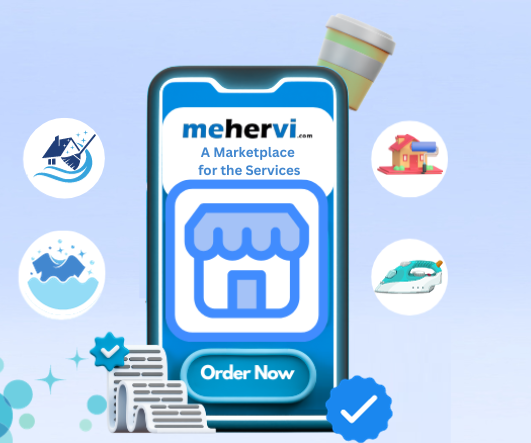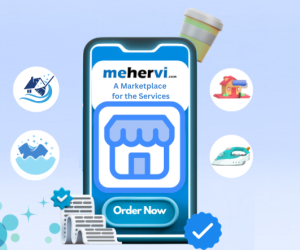Maintaining a spotless commercial kitchen is essential to operating a hospitality facility. The Food & Drug Administration (FDA) has very strict requirements on food cleanliness, and in order to remain open, you must adhere to them. The only way to make sure, all the requirements are being fulfilled is to adhere with Commercial Kitchen Cleaning.
Maintaining proper food hygiene lowers the risk of food illness and guarantees that food is safe to consume. It is your responsibility as the manager or owner of a commercial kitchen to implement procedures that will guarantee that food safety is an inevitable by-product of the operation, and all employees should receive training in this manner. For compliance with FDA requirements, A regular Deep cleaning is required with a consistent frequency and here’s what you should know about cleaning commercial kitchens in United States of America.
What is Cross-Contamination and how to prevent it?
What does it mean by Cross-Contamination? The phrase used to describe the transmission of bacteria between food, surfaces, and equipment is cross-contamination. It is most likely to occur when raw food comes into contact with or spills over prepared food, equipment, or surfaces. A sandwich kept in the refrigerator, for instance, may pick up bacteria from the dripping raw meat and result in food poisoning.
You should thoroughly cleanse your hands, surfaces, and equipment between food preparation tasks to avoid cross-contamination. Additionally, different meals should be kept sufficiently apart, and if needed, color-coded tools should be used (especially knives and cutting boards). Color coding is perhaps one of the most effective techniques to keep kitchens free from cross-contamination. You should use color coding schemes for the following additional supplies and tools:
- Buckets and mops
- Brooms and brushes
- Cleaning Rags (Cloths)
- Dustpans and brushes
Use additional safety measures, such as organizing your materials in lockable cabinets to ensure they are only used, when necessary, in addition to color-coding your cleaning supplies. Another smart move is to store cleaning supplies in their original packaging so that you can be sure you’re using the correct solution when it comes time to clean. Preventing cross-contamination also requires frequent hand washing. Prior to transferring between departments of the kitchen or handling raw meat, team members should wash their hands. Equipment should be carefully cleaned in preparation for future reuse after raw meat preparation.
Important parts of Commercial Kitchen Cleaning and How Often Should You Clean them?
Following are the important parts or surfaces considered the most important and commercial Kitchen Cleaning. Table below shows the type of surfaces and when to clean them;
| Kitchen area | Cleaning frequency |
| Surfaces | After each use |
| Utensils | After each use |
| Sinks | Throughout the day |
| Floors | Daily |
| Ovens | Weekly |
| Bins | Weekly |
| Fridges and freezers | Monthly |
| Ventilation | 3 months to 1 year |
Important Supplies/Equipments for Commercial Kitchen Cleaning
In order to keep Kitchen tidy and prepared for use all the tiume, we prepared a List of Cleaning Supplies/Equipments you will need in Commercial Kitchen Cleaning. Every day, along with other business laundry, Cleaning Rags and other business fabrics should be put in the washing machine, and a ready supply should always be kept nearby. Regular cleaning of mop handles is also recommended. The mop should be washed under a hot faucet to get rid of extra dirt and food particles before using it again in between mop head changes.
The following are some of the most essential cleaning supplies/equipments for a commercial kitchen cleaning:
- Wheeled Mop Bucket
- Mop And Extra Mop Heads
- Broom
- Dustpan And Brush
- Microfiber Cloths
- Cotton Cleaning Cloths
- Sponge Scourers
- Industrial Cleaning Gloves
- Multipurpose, Food-Safe Cleanser
- Floor Cleaner
- Grill Cleaning Tools
How to Perform Deep Commercial Kitchen Cleaning?
A thorough Commercial Kitchen Cleaning plan should be put in place so that everyone on the kitchen crew is aware of what needs to be done at the end of the day. Furthermore, it establishes accountability because no assignment should be approved unless it is finished to a high standard. Upon completion of the workday, the duty manager or head chef ought to verify that all areas have been meticulously cleaned.
Prior to the changeover
When the chef enters the Commercial kitchen at the start of a shift, they should clean all the surfaces with a food-safe antibacterial cleaner and a clean cloth, arrange clean towels and cloths nearby for use during the shift. After that, they can begin preparing or cooking food.
During the shift
Shift staff plays an important role in Commercial Kitchen Cleaning. In order to keep their workspace neat during their shift, kitchen staff members should incorporate cleaning duties into their everyday routine and grab a cloth or mop whenever they get a minute of peace. There won’t be as much work to accomplish after the shift if you stay on top of the responsibilities throughout the day.
In order to maintain the cleanliness;
- Bins should be emptied as it fills,
- Any spills should be cleaned.
- Grease build-ups and food debris from the grills should be removed
At the End of the shift
A Deep Commercial Kitchen cleaning is required to get rid of the days’ worth of grime and oil at the end of the shift. Employees should avoid cross-contamination by deep cleaning the kitchen with fresh cloths and using separate cloths for different areas of the kitchen. To make cleaning every square inch of the floor possible, a lot of kitchens contain movable appliances.
The tasks are as follows ;
- Sweeping and mopping the floor
- Replacing the cleaning supplies
- Emptying and cleaning the deep fryers
- Cleaning the stoves and grills
- Removing soiled aprons and chefs’ whites and putting them aside for laundry
- Covering, sealing, and chilling food
At the End of the Week
Efficiently cleaning appliances and equipment, especially those difficult-to-reach areas where crumbs may collect, is very crucial. Reducing the likelihood of infestation can be directly impacted by these tasks.
The following tasks should be completed once a week:
- Cleaning and disinfecting the fridge
- Deep cleaning fryers
- Sanitizing shelves and cupboards
- Sanitizing dishwashing and glass wash
- Cleaning and disinfecting the bins.
You may reduce the danger of cross-contamination and food safety in your commercial kitchen by using thetips in this article for Commercial Kitchen Cleaning. In addition to making your kitchen a nicer and cleaner place to work, You will make sure proper hygiene in your commercial settings for Staff and Customers This translates into happier consumers, safer employees, and higher ratings from the Food & Drug Administration (FDA).
Click here to read more informative articles like this or to book your free consultation with Mehervi experts for your upcoming Commercial Kitchen Cleaning Project.







